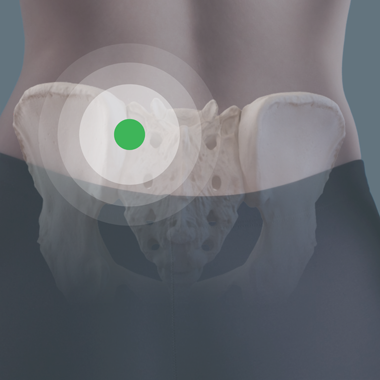SI Joint Pain and Pregnancy
Pregnancy is a time in a woman’s life where her body undergoes numerous changes. One of these changes includes the widening and increased mobility of the sacroiliac (SI) joints. However, this increased mobility is often one of the most common sources of pain in pregnant women.

What is SI Joint Pain
The SI joint connects the sacrum at the base of the spine to the iliac in the hip bone, allowing for movement in different directions while also absorbing shock. When there is too much or too little movement in the SI joint, it can often result in:
- Radiating pain around the hips and legs
- Feeling of instability
- Loss of bladder or bowel control
- Stiffness and reduced mobility
Why Does SI Joint Pain Happen in Pregnancy?
A majority of pain associated with pregnancy is related to a hormone called relaxin, which allows your muscles and ligaments to loosen up. Although the body produces this hormone to prepare for childbirth, it can make you less stable and more prone to injuries and conditions, such as SI joint dysfunction.
How to Decrease SI Joint Pain During Pregnancy
As your pregnancy progresses and you gain more weight as the baby grows, SI joint pain can worsen. If you don’t want to suffer from this pain throughout a nine-month pregnancy, here are some tips that may help:
Note: always check with your OB/GYN before beginning any new exercises during pregnancy.
Invest in a maternity support belt
A maternity support belt is designed to relieve pressure from your SI joint, as well as to help you improve your posture. You can wear one whenever you’re walking or doing other light activities.
Do pelvic tilts
This exercise is excellent for helping to decompress the SI joints, especially when done multiple times a day. Pelvic tilts also strengthen your lower back muscles in order to help with pain relief and stabilization. To perform this exercise, lie on the floor with your back straight up and your head facing the ceiling. Next, bend your knees and place your feet flat on the floor. Then, tilt your pelvis backwards as if you were sucking in your stomach. Hold for a few seconds and then release it back to a neutral position.
Perform banded hip abduction exercises
The muscles that are closest to the SI joint are the obturator internus and externus. If they become shortened, then the SI joint must compensate for that tightness. These exercises can help lengthen and reinforce those muscles. To perform this exercise, place the resistance band around your knees and sit at the edge of your chair. With your feet on the floor, separate your knees slowly to apply tension on the band. Hold the pose for about three seconds, and then gradually return to your initial position.
Hold a squat position for 30 seconds each day
When standing, your pelvis should always be in a neutral position. However, during pregnancy, women actively extend their spine to support the fetus, which moves their pelvis forward. Holding a squat for half a minute each day will help reset the pelvic bones, so they are all in the correct place.
Contact PainTEQ
For most pregnant women, SI joint pain will resolve itself within four months after giving birth. However, in about 20% of cases, women may experience SI joint pain for up to three years postpartum. To seek treatment for SI joint pain, contact PainTEQ today to see if you are a candidate for our innovative LinQ SI Joint Stabilization System procedure.



